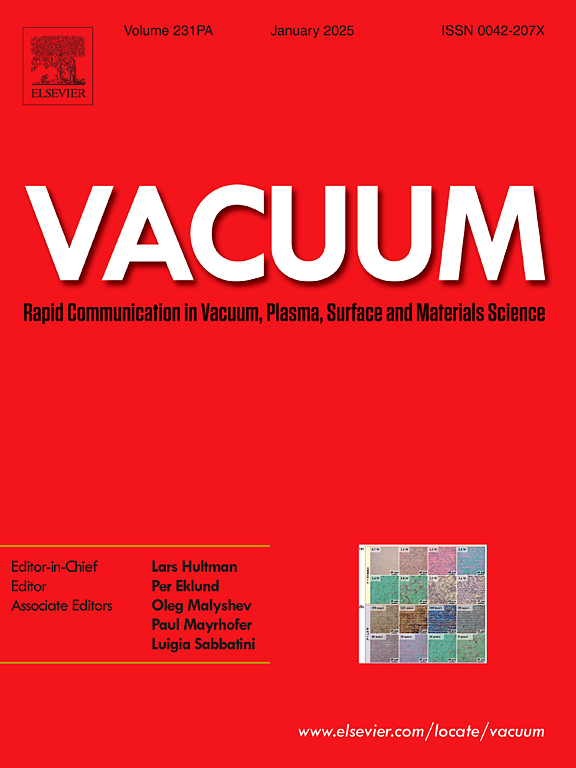锆合金低真空摆动激光焊接成形特性及熔池行为研究
IF 3.8
2区 材料科学
Q2 MATERIALS SCIENCE, MULTIDISCIPLINARY
引用次数: 0
摘要
针对开发锆合金熔覆结构材料焊接新工艺的需要,对锆合金真空振荡激光焊接工艺及其机理进行了研究。通过金相检验、x射线检测和高速成像分析,对焊缝成形和缺陷进行了深入检查。实验结果表明,随着环境压力的降低,羽流现象得到有效控制,锆合金真空激光焊接熔深显著提高。通过对不同振动参数的对比研究表明,圆形振动轨迹可获得最佳的焊缝成形效果。此外,焊接仿真研究揭示了真空振荡激光焊接熔池的流动特性和锁孔的周期性变化。结果表明:0.25 s后,熔池达到稳定状态;在一个振荡周期内,当激光到达圆轨迹的端点时,锁孔深度达到最大值。此外,在激光的搅拌作用下,熔池呈现出与激光运动方向一致的流动模式。本文章由计算机程序翻译,如有差异,请以英文原文为准。
Study on the forming characteristics and molten pool behaviour of low vacuum swing laser welding of zirconium alloy
A study was conducted on the vacuum oscillating laser welding process and its mechanisms for zirconium alloy, in response to the need for developing new welding techniques for zirconium alloy cladding structural materials. Through metallographic inspection, X-ray detection, and high-speed imaging analysis, an in-depth examination of the weld formation and defects was carried out. Experimental results indicate that as the environmental pressure decreases, the plume phenomenon is effectively controlled, leading to a significant increase in weld penetration depth during vacuum laser welding of zirconium alloy. A comparative study of different oscillation parameters revealed that a circular oscillation trajectory produces the best weld formation. Furthermore, welding simulation studies uncovered the flow characteristics of the molten pool and the periodic variations of the keyhole in vacuum oscillating laser welding. The results show that after 0.25 s, the weld pool reaches a stable state. Within a single oscillation cycle, the keyhole depth reaches its maximum when the laser reaches the endpoint of the circular trajectory. Additionally, under the stirring effect of the laser, the molten pool exhibits a flow pattern consistent with the laser's movement direction.
求助全文
通过发布文献求助,成功后即可免费获取论文全文。
去求助
来源期刊

Vacuum
工程技术-材料科学:综合
CiteScore
6.80
自引率
17.50%
发文量
0
审稿时长
34 days
期刊介绍:
Vacuum is an international rapid publications journal with a focus on short communication. All papers are peer-reviewed, with the review process for short communication geared towards very fast turnaround times. The journal also published full research papers, thematic issues and selected papers from leading conferences.
A report in Vacuum should represent a major advance in an area that involves a controlled environment at pressures of one atmosphere or below.
The scope of the journal includes:
1. Vacuum; original developments in vacuum pumping and instrumentation, vacuum measurement, vacuum gas dynamics, gas-surface interactions, surface treatment for UHV applications and low outgassing, vacuum melting, sintering, and vacuum metrology. Technology and solutions for large-scale facilities (e.g., particle accelerators and fusion devices). New instrumentation ( e.g., detectors and electron microscopes).
2. Plasma science; advances in PVD, CVD, plasma-assisted CVD, ion sources, deposition processes and analysis.
3. Surface science; surface engineering, surface chemistry, surface analysis, crystal growth, ion-surface interactions and etching, nanometer-scale processing, surface modification.
4. Materials science; novel functional or structural materials. Metals, ceramics, and polymers. Experiments, simulations, and modelling for understanding structure-property relationships. Thin films and coatings. Nanostructures and ion implantation.
 求助内容:
求助内容: 应助结果提醒方式:
应助结果提醒方式:


